#tips and techniques
Explore tagged Tumblr posts
Text

Now ☝️ vs Then 👇
I'm scrolling through posts on my Instagram page and can't believe how much I've grown and progressed compared to when I first started the toy photography hobby.

Here are a few tips on how to improve your photography skills:
Practice, practice and only practice.
Make sure the lighting is good.
Avoid pictures of minifigures standing around doing nothing, the picture should tell a story.
Make sure you have something interesting in the background, but not distracting, and preferably also have something in front to achieve a 3D effect and a sense of depth.
Look at what other toy photographers are doing and learn from them. Try to recreate what they're doing in your own way.
#now vs then#toy photography#lego photography#photography#photography tips#how to improve#tips and tricks#tips and techniques#toyphotography#legophotography#toyphoto#legophoto#lego#toyphotogallery#toy photographers#instagram#legominifigures
71 notes
·
View notes
Text
youtube
Take full control of your router: Installing OpenWrt Linux on TP-Link Archer
Installing custom, open-source firmware for your router is a good idea in terms of privacy, security, and performance. In this tutorial, I will show how to install OpenWRT on TP-Link Archer C6 Wifi router.
#tp link#linux tutorial#wifi router#youtube#educate yourself#educate yourselves#hacking#free education#tips and tricks#tips and techniques#computer tips#education#TP-Link Archer#computer security#cyber security#Youtube
2 notes
·
View notes
Text
10 Non-Lethal Injuries to Add Pain to Your Writing
New Part: 10 Lethal Injury Ideas
If you need a simple way to make your characters feel pain, here are some ideas:
1. Sprained Ankle
A common injury that can severely limit mobility. This is useful because your characters will have to experience a mild struggle and adapt their plans to their new lack of mobiliy. Perfect to add tension to a chase scene.
2. Rib Contusion
A painful bruise on the ribs can make breathing difficult, helping you sneak in those ragged wheezes during a fight scene. Could also be used for something sport-related! It's impactful enough to leave a lingering pain but not enough to hinder their overall movement.
3. Concussions
This common brain injury can lead to confusion, dizziness, and mood swings, affecting a character’s judgment heavily. It can also cause mild amnesia.
I enjoy using concussions when you need another character to subtly take over the fight/scene, it's an easy way to switch POVs. You could also use it if you need a 'cute' recovery moment with A and B.
4. Fractured Finger
A broken finger can complicate tasks that require fine motor skills. This would be perfect for characters like artists, writers, etc. Or, a fighter who brushes it off as nothing till they try to throw a punch and are hit with pain.
5. Road Rash
Road rash is an abrasion caused by friction. Aka scraping skin. The raw, painful sting resulting from a fall can be a quick but effective way to add pain to your writing. Tip: it's great if you need a mild injury for a child.
6. Shoulder Dislocation
This injury can be excruciating and often leads to an inability to use one arm, forcing characters to confront their limitations while adding urgency to their situation. Good for torture scenes.
7. Deep Laceration
A deep laceration is a cut that requires stitches. As someone who got stitches as a kid, they really aren't that bad! A 2-3 inch wound (in length) provides just enough pain and blood to add that dramatic flair to your writing while not severely deterring your character.
This is also a great wound to look back on since it often scars. Note: the deeper and wider the cut the worse your character's condition. Don't give them a 5 inch deep gash and call that mild.
8. Burns
Whether from fire, chemicals, or hot surfaces, burns can cause intense suffering and lingering trauma. Like the previous injury, the lasting physical and emotional trauma of a burn is a great wound for characters to look back on.
If you want to explore writing burns, read here.
9. Pulled Muscle
This can create ongoing pain and restrict movement, offering a window to force your character to lean on another. Note: I personally use muscle related injuries when I want to focus more on the pain and sprains to focus on a lack of mobility.
10. Tendonitis
Inflammation of a tendon can cause chronic pain and limit a character's ability to perform tasks they usually take for granted. When exploring tendonitis make sure you research well as this can easily turn into a more severe injury.
This is a quick, brief list of ideas to provide writers inspiration. Since it is a shorter blog, I have not covered the injuries in detail. This is inspiration, not a thorough guide. Happy writing! :)
Looking For More Writing Tips And Tricks?
Check out the rest of Quillology with Haya; a blog dedicated to writing and publishing tips for authors!
Instagram Tiktok
#hayatheauthor#haya's book blog#haya blogs#writing community#quillology with haya#writing tools#writer things#writing advice#writer community#writing techniques#writing prompt#writing stuff#creative writing#ya writing advice#writing tips and tricks#writer tools#writers of tumblr#writer blog#writers block#quillology with haya sameer#writers on tumblr#writerscommunity#writer stuff#author help#author advice#author#writing inspiration#writeblr#novel writing#on writing
62K notes
·
View notes
Text
Wow! What a neat technique!


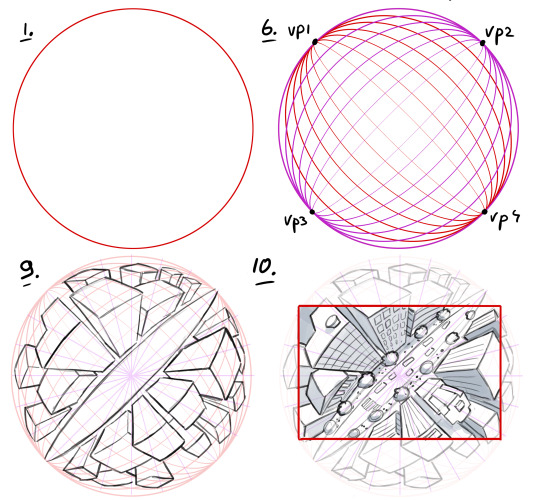
----

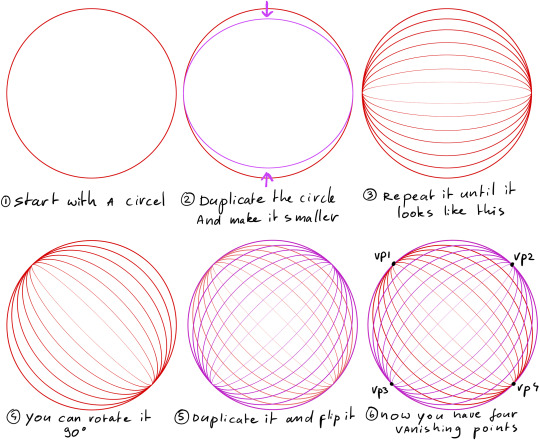

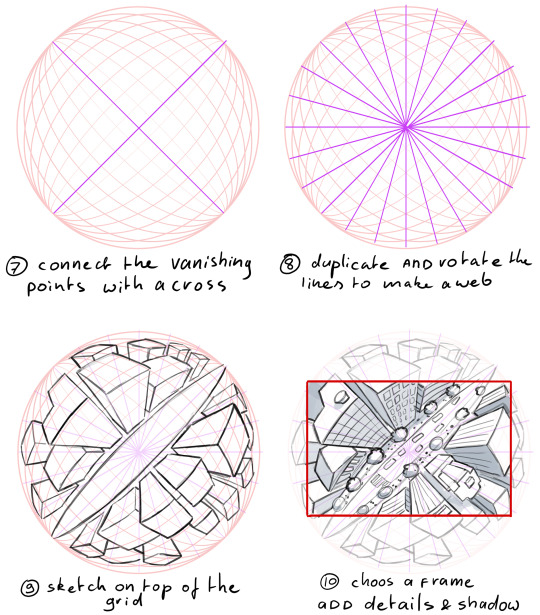
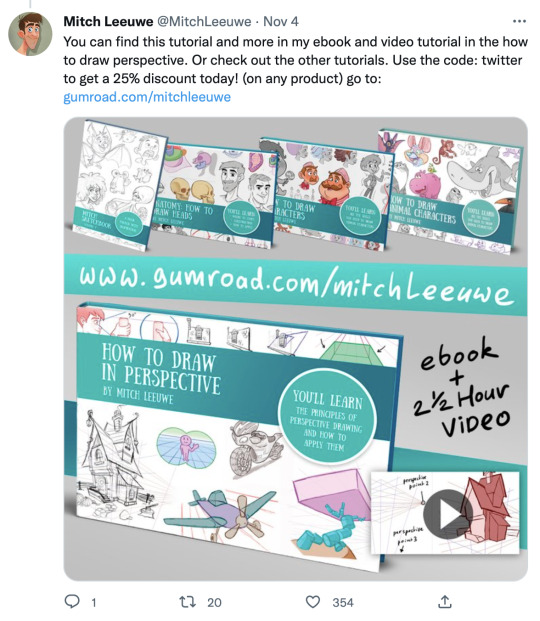
10K notes
·
View notes
Text
Mastering Photography with YouTube: A Guide to Learning Through Videos
Introduction In the digital age, photography has become more accessible than ever before. Whether you’re using a smartphone or a professional camera, the desire to capture stunning images is universal. One of the most effective and accessible ways to learn photography is through YouTube. This platform hosts a wealth of tutorials, reviews, and tips that cater to all levels, from beginners to…
#A Guide to Learning Through Videos#Beginner Photography#BeginnerPhotography#Camera Techniques#CameraTips#Creative Photography#CreativePhotography#Digital photography#LearnPhotography#Mastering Photography#Mastering Photography with YouTube#Online Education#Photography Tips#Photography Tutorials#PhotographyCourses#PhotographyGuides#PhotographyHacks#PhotographyTechniques#PhotographyTips#PhotoSkills. VideoTutorials#technique#tips#Tips and Techniques#Visual Learning#Youtube#YouTube Learning#YouTubeLearning. PhotoEditing#YouTubePhotography#YouTubeTutorials
0 notes
Text
A fun technique using strips of paper - Part 2
[vc_row][vc_column][vc_column_text] Having a lot of scrap of paper can be overwhelming so today I want to show you another way to use up those scraps. Today, I am going to show you how to create fun greetings or sentiments using scraps of paper. So let’s get started. First of all, take your scraps of paper and cut them into 1/2″ strips approximately 5-6″ in length. The strips can be card stock…
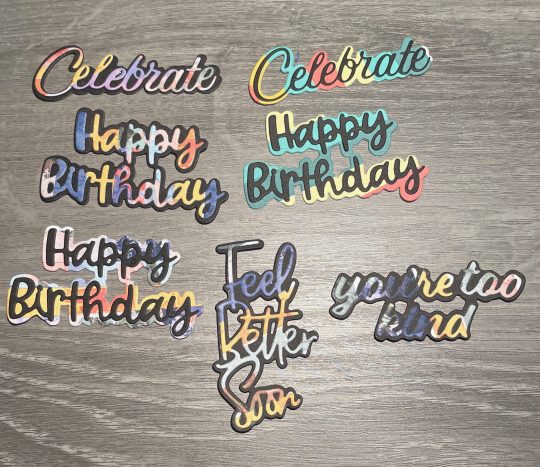
View On WordPress
0 notes
Note
advice for a character who grips control like a lifeline. who wants to be in charge of every little thing because whenever they're not in control of something something bad could happen. has happened. they can't let a single variable be wild or in someone else's hands
How to Write a Controlling Character
Backstory Rooted in Trauma or Guilt
This character likely has a history that has ingrained the belief that they must be in control or face devastating consequences. Perhaps they once trusted someone else with something crucial—a promise, a responsibility, or a life-altering choice—and that trust was broken in a way that had lasting repercussions. For example, maybe they lost someone because they weren’t “careful enough,” or they experienced a betrayal when they trusted another person’s plan.
They might frequently flash back to this moment, possibly catching themselves thinking, If only I’d been the one in control, this wouldn’t have happened. This memory fuels their need to keep a tight grip on everything, especially if they’re in high-stakes situations.
Rigid Daily Routines and Habits
This character’s day is probably packed with small rituals and routines that give them a sense of security. From double-checking door locks to setting multiple alarms, they rely on routines to give themselves a sense of order. In fact, they might be nearly ritualistic about small actions—checking emails three times before sending, never leaving a task halfway finished, or meticulously arranging their workspace.
Even something as simple as making coffee can become a precise process. If someone moves one of their tools or a file from their desk, they may feel a spike of frustration or even anxiety, seeing it as a disruption to their personal “system.” They could feel that control in their daily life is the only thing keeping chaos at bay.
Intensely Observant of Details and Mistakes
They are hyperaware of mistakes or inefficiencies in others, mentally cataloging things like a coworker’s slight lateness or a friend’s disorganization. They may feel a sense of superiority (or frustration) over people who don’t “have it together” and take it upon themselves to organize or “fix” things for others.
In conversation, they might cut people off or “correct” them even over small points, often justifying this to themselves as necessary. For instance, if someone shares a plan that seems half-formed, this character could immediately dive in, pointing out potential problems or filling in details.
Controlling Relationships and Social Situations
This character struggles in relationships where they aren’t the dominant or organizing force. They might instinctively take over when making plans with friends, micromanaging even casual hangouts to make sure everything goes “right.” For example, they might pick the restaurant, plan the travel route, and check weather forecasts—assuming that if they don’t, no one else will think of these things.
When someone resists their attempts at control, they can respond defensively, often turning cold or resentful, unable to understand why anyone wouldn’t want them to manage the situation. Statements like, “Fine, but don’t blame me if this doesn’t go well,” are frequent in their interactions.
Extreme Anxiety or Panic When Control Is Taken Away
When things go beyond their reach, this character might experience panic, as if they’re suddenly powerless. For instance, if an unexpected roadblock prevents them from handling a task (like a canceled flight they needed to board, or a plan that falls apart), they might spend hours trying to regain control, calling every contact or frantically exploring alternatives.
Their reaction may feel extreme to others. Even minor setbacks—such as a colleague taking initiative on a project or a friend planning something without consulting them—can trigger a disproportionate response, like clenching their fists, pacing, or silently stewing as they feel the situation “slipping.”
Inability to Accept Help or Collaboration
Their controlling nature makes it hard for them to collaborate, as they believe their methods are the only ones that work. For them, accepting help feels like an admission of weakness or failure, so they rarely delegate or ask for assistance. If they do reluctantly accept help, they are constantly supervising or “suggesting” things, making it feel more like they’re still in charge.
In a team setting, they might take on all the major tasks, either out of distrust in others’ abilities or a feeling that no one will match their standards. Their motto could be something like, “If you want something done right, do it yourself,” even if that means working late or burning out.
Reluctance to Show Vulnerability or Need
Since vulnerability and control rarely coexist for them, they avoid showing weakness at all costs, preferring to mask stress or struggles as “just part of the job.” If they do become overwhelmed, they’re more likely to shut people out, saying, “I’ve got it handled,” even if it’s far from true.
When people push them to let go or share the load, they might lash out, accusing others of “just not understanding.” They often see their intense responsibility as a form of sacrifice, justifying their behavior with, “If I don’t handle this, who will?”
#creative writing#writeblr#ask box prompts#how to write a controlling character#how to write#writing tips#writing advice#writing resources#writing help#writing reference#writing prompts#how to#writing tools#writing techniques#writing stuff
2K notes
·
View notes
Text
✧˖° studying without suffering: how to actually enjoy learning (yes, it’s possible)



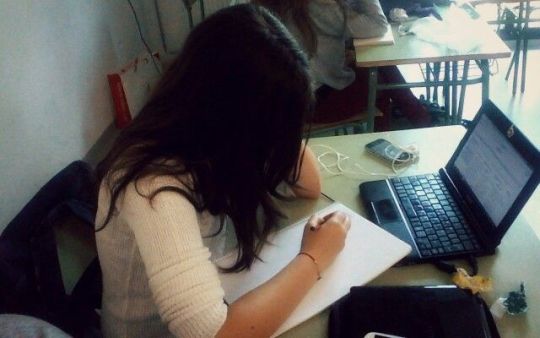

✧˖° let’s talk.
hey angels, it's mindy!
most people treat studying like a punishment. something to be endured, not enjoyed. it’s that thing you force yourself to do, like taking bitter medicine or running a mile in gym class. but what if that’s the reason you struggle with it?
the secret? you were never meant to hate learning.
somewhere along the way, school made it boring. maybe you had teachers who sucked the fun out of it. maybe you associate studying with stress, deadlines, and exhaustion. but learning is supposed to be exciting. when you actually enjoy it, everything changes. you focus longer, retain more, and (ironically) spend less time studying because your brain actually absorbs the information.
so, let’s fix it. let’s make studying something you want to do instead of something you suffer through.
✧˖° ➼ step 1: detach learning from school
(school & learning are not the same thing. stop letting school ruin your curiosity.)
the first mindset shift? realize that school does not own learning.
➼ school is about structure, deadlines, and tests. it’s designed to measure performance. ➼ learning is about curiosity, deep thinking, and exploration. it’s designed to expand your mind. and help you grow as a person.
if you’ve only ever studied because you had to, your brain associates it with pressure. break that pattern. find something outside of school that you actually like learning about. philosophy, psychology, art history, neuroscience, fashion design, whatever makes you curious.
even if it’s unrelated to your classes, it rewires your brain to see learning as an intrinsic activity, not just an obligation. once you enjoy learning in general, you can transfer that energy back into your studies.
✧˖° ➼ step 2: romanticize the process (but actually make it feel good)
("romanticizing studying" doesn’t mean just buying cute stationery. let’s go deeper.)
sensory association is everything. your brain links experiences to the way they feel physically. so if studying feels uncomfortable, you’ll avoid it. the solution? make it a luxurious experience for your senses.
✧ visuals → clean, minimalist desk, soft lighting, aesthetic study materials ✧ sound → rain sounds, classical piano, lo-fi beats (music that enhances focus) ✧ touch → cozy blankets, warm tea, smooth pens gliding over paper ✧ scent → vanilla candles, fresh coffee, the pages of an old book
this isn’t just about aesthetics. it’s neuroscience. when studying feels pleasurable, your brain stops resisting it.
✧˖° ➼ step 3: use high-dopamine study techniques
(forcing yourself to study the “normal” way is why you hate it.)
some study methods are literally designed to be boring. ditch them.
instead, try:
➼ blurting method: instead of passively reading, close your book and write down everything you remember. then check what you missed. (way more engaging than just re-reading notes.) ➼ dual-coding: mix visuals with text. draw tiny sketches next to your notes. turn concepts into mind maps. watch a video explaining a topic right after reading about it. ➼ pomodoro stacking: instead of the typical 25-minute study sprints, customize it. (ex: 50 min deep focus + 10 min break with an actual reward.) ➼ interleaving technique: mix subjects instead of block studying. it forces your brain to stay engaged.
stop making studying harder than it needs to be. find what works for you, and your brain will stop fighting it.
✧˖° ➼ step 4: make studying social (but in a smart way)
(because you’re not supposed to do this alone.)
studying alone for hours? miserable. but studying with others who are just as serious as you? instant motivation boost.
but instead of chaotic group study sessions where no one gets anything done, try:
✧ parallel studying: hop on facetime or join a study livestream. silent, focused, but together. ✧ teaching method: explain concepts to a friend. if you can teach it, you truly understand it. ✧ study accountability: check in with someone daily. send each other your study goals, no excuses.
even just knowing someone else is studying at the same time can trick your brain into feeling more engaged.
✧˖° ➼ step 5: shift your identity
("i hate studying" isn’t a personality trait. it’s a mindset problem.)
if you keep saying “i hate studying,” your brain will never enjoy it. change the narrative.
➼ instead of “i suck at studying,” try → “i’m learning how to study in a way that works for me.” ➼ instead of “i can’t focus,” try → “i’m training my brain to focus longer every day.” ➼ instead of “i don’t feel like it,” try → “i’m someone who gets things done, whether i feel like it or not.”
become the type of person who enjoys learning. once that becomes your identity, everything else follows.
✧˖° ➼ step 6: create emotional attachment to your goals
motivation dies when your goals feel distant and impersonal. if you’re studying just because you “have to,” it’s easy to procrastinate. but if you link it to something deeply personal, it becomes non-negotiable.
try this: visualize your future self. imagine the version of you who already achieved everything you want. who is she? what does she do? how does she study?
then, make it emotional. ✧ if you dream of getting into your dream school, print pictures of it. make a vision board. ✧ if you want financial freedom, imagine the luxury of never stressing over money. ✧ if you want to be respected in your field, remind yourself that your knowledge is your power.
when you make studying personal, it stops being a chore. it becomes a commitment.
✧˖° ➼ step 7: stop making everything harder than it needs to be
(struggling doesn’t mean you’re working harder. it just means you’re struggling.)
too many people study inefficiently because they think suffering = productivity. but studying smarter is always better than studying longer.
some ways to make it easier on yourself: ➼ use study apps → quizlet, pomdoro apps for focus, notion for organization ➼ summarize like you’re texting a friend → rewrite notes in your own words, no unnecessary fluff ➼ study in “levels” → don’t jump straight into deep studying. warm up with light review, then increase intensity ➼ take advantage of spaced repetition → stop cramming, your brain retains more when you review over time
efficiency = less stress, better results. don’t work harder than necessary.
✧˖° ➼ step 8: replace toxic productivity with high-performance habits
studying 10 hours in one night ≠ academic excellence. true high-achievers prioritize sustainability.
➼ quit glorifying exhaustion. taking breaks improves focus. it’s not laziness. ➼ learn when to walk away. if you’re zoning out, step away. 10 minutes of real focus > 2 hours of fake studying. ➼ protect your sleep. all-nighters don’t make you hardcore, they make you ineffective. your brain processes info while you sleep.
the goal isn’t to study the longest. it’s to study in a way that keeps your mind sharp and focused.
✧˖° ➼ step 9: master the “dopamine pull” method
instead of forcing motivation, use dopamine to your advantage.
➼ habit stacking → pair studying with something enjoyable (ex: study while drinking your favorite matcha) ➼ mini rewards → after finishing a chapter, reward yourself with something small but satisfying ➼ gamification → track progress like a video game. every completed task = a “level up”
your brain loves dopamine. give it reasons to associate studying with good feelings.
✧˖° ➼ step 10: let go of perfectionism (but keep high standards)
perfectionism leads to procrastination and burnout. instead of striving for flawless, aim for consistent excellence.
✧ done is better than perfect. stop rewriting notes 5 times. ✧ progress is the goal. each study session should move you forward, even if it’s small. ✧ your worth is not your grades. strive for success, but don’t let school define you.
when you release perfectionism, you actually start achieving more. keep your standards high, but don’t let them paralyze you.
✧˖° mindy’s personal tips
(things that helped me romanticize studying & actually make it enjoyable:)
➼ set a 5-minute timer. just start. most of the time, your brain stops resisting once you begin. ➼ don’t let study guilt ruin your breaks. rest is productive. ➼ have a “study fit.” i swear, dressing up just a little makes a difference. ➼ invest in one high-quality pen. something that glides effortlessly. small detail, huge difference. ➼ study in cafés, libraries, parks. switch locations to keep it interesting. ➼ make it ✧ cozy ✧. fuzzy socks, oversized sweaters, soft blankets. your comfort matters.
✧˖° homework: rewire your study experience
➼ for one of your study sessions this week, try at least two of the techniques above. ➼ write a short journal entry: how do you want to feel while studying? how can you make that happen? ➼ change just one thing about your study setup that makes it more enjoyable.
then come back & tell me. did studying feel better? (you can always message me or send me an ask in my inbox)

#girlblogger#studyspo#studyhacks#romanticizelearning#academicweapon#glowup#selfimprovement#tumblrgirl#studentlife#focusmode#girl blogger#glowettee#dream girl#it girl energy#study tips#pink#becoming that girl#that girl#self improvement#academic motivation#academic validation#academic weapon#chaotic academic aesthetic#student life#student#studying#studyblr#university#study techniques#study aesthetic
1K notes
·
View notes
Text
20 Alternative Losses Your Protagonist Can Face That Don't Involve the Death of a Person.
In one of my recent posts, I talked about losses as a core principle in driving a plot forward.

It's recommended in almost all guides. But here's the thing: someone doesn't have to actually die to create that emotional rollercoaster.
Here are 20 different losses your protagonist can face without losing someone to the cold hands of death:
1. Loss of a dream job opportunity
2. End of a long-term relationship or marriage
3. Betrayal by a close friend or family member
4. Financial ruin or bankruptcy
5. Loss of a beloved pet (The pet could go missing.)
6. Rejection from a prestigious program or institution
7. Injury or illness leading to the loss of physical abilities
8. Destruction of a childhood home
9. Loss of custody of a child
10. Failure to achieve a lifelong dream or goal
11. Being falsely accused of a crime
12. Natural disaster destroying personal belongings and home
13. Loss of a valuable family heirloom
14. Experiencing discrimination or injustice
15. Being forced to move away from a beloved community
16. Losing a significant competition or contest
17. Loss of memory or cognitive abilities
18. Falling out with a mentor or role model
19. Closure of a cherished local business
20. Loss of one's reputation due to scandal or rumor
Thank you for all of your support. If you love my blog, consider gifting me a rose. Val's here, and I hope your characters are ready to paint the town red.
Check out this printable template that helps you structure the nuanced parts of your plot you normally skip out on.
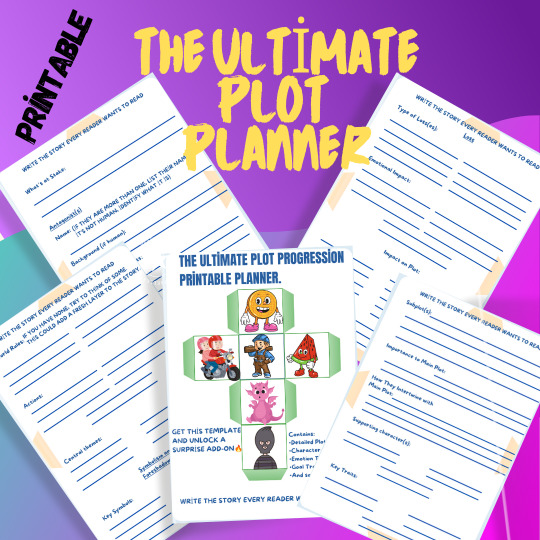
You also receive a free add-on that enhances your plot. It saves you time and helps you maintain quality.
#writeblr#writers on tumblr#writing#writers and poets#writerscommunity#writer#writing community#ao3 writer#wattpad#a03 writer#writers#writing prompts#writing guide#writing advice#writing reference#writing resources#writing habits#writing help#writing blog#writing techniques#writing template#writing tips and tricks#writing tool#writing tips#writing plot#plot problems#aspiring writer#writer and poets#writer blog#writer help
840 notes
·
View notes
Note
hi! do u have any prompts or tips for writing miscommunication?
Hi, thanks for asking! Miscommunication is such a powerful tool in storytelling—it can create tension, humor, heartbreak, disaster, deepen conflict, and make relationships feel more real, all depending on how you use it. Here are some tips and ideas!
1. Give them a reason to misunderstand.
Miscommunication isn’t just about bad hearing or unclear words—it’s about perspective. Each character brings their own biases, fears, and assumptions into a conversation, which shapes how they interpret things.
Examples:
Misreading the other’s tone as disinterest or rudeness, or taking sarcasm seriously.
Being too embarrassed to ask for clarification and pretending to understand.
Hearing part of a conversation and assuming the worst before getting the full story.
2. Use context & distractions to twist the meaning.
Realistic miscommunication often happens because of outside factors, like background noise, stress, exhaustion, or missing context. If your character is in a high-stakes situation, they may be more likely to misinterpret things.
Examples:
Two characters are arguing, and one storms off before hearing the other’s explanation.
A message is delivered at the worst possible time, leading to an unintended misunderstanding.
Assuming they’re being talked about when the topic is something or someone else entirely.
3. Non-verbal miscommunication.
Miscommunication can come from texts, body language, cultural differences, or even personal insecurities—it doesn’t always have to be verbal.
Examples:
Assuming a friend is ignoring them when they’re actually distracted or dealing with something else.
Sending a message to the wrong person.
A nervous laugh at the wrong time, making it seem like they’re mocking someone’s pain.
4. Let it snowball, but not forever.
A small miscommunication can grow into something huge, but at some point, it should ideally be resolved. The longer it lasts, the more consequences it will have, which may be what you’re going for, but it also makes it more frustrating for the reader.
Examples:
Holding a grudge for months over a misunderstanding.
One person finally explains the truth, but the other is too stubborn to believe them—until undeniable proof forces them to see it.
5. Use miscommunication to reveal character flaws.
How your characters handle (or fail to handle) miscommunication can reveal a lot about them. Do they get defensive? Do they double down? Do they laugh it off? Their reaction can reveal a lot about their personality.
Examples:
Always assuming the worst and jumping to conclusions.
Refusing to admit they misunderstood and instead blaming the other person.
Habit of overexplaining, making things even more confusing.
Hope this helped! For more specific prompts, feel free to check out my previous post, linked here.
Previous | Next
#ask#writeblr#writing#writing tips#writing advice#writing help#writing resources#creative writing#writing prompts#writing ideas#miscommunication#writing techniques#deception-united
681 notes
·
View notes
Text
Behind the Scenes: Brave Little Knight 🗡️🛡️
Want to see how I used Nikon Z5II’s focus shift shooting and focus stacking in Photoshop to create one sharp, dramatic frame of a LEGO knight facing a dragon? ⚔️🐉
Then head over to the ToyPhotographers blog, where I shared the full behind-the-scenes process and explained how this technique helped keep both subjects crisp while the background stayed softly blurred and unobtrusive. 📸🎬
#lego#toy photography#lego photography#focus shift shooting#focus stacking#photoshop#photography tips#behind the scenes#nikon z5ii#toy photographers#tips and techniques
20 notes
·
View notes
Text
youtube
How to configure OpenWrt as Firewall for your home network and Guest Wifi and IPTables explained
Guest Wifi in your home network can easily be done with OpenWrt. How to configure OpenWrt as Firewall, how to build a firewall for your home network, How to make a Guest Wifi and a separate IOT Wifi and Firewall zone ? IPTables are explained in the middle part.
#openwrt#open source#free education#IPTables explained#router#education#educate yourselves#hacking#educate yourself#tips and tricks#OpenWrt as firewall#cyber security#computer security#data security#computer tips#tips and techniques#Youtube
1 note
·
View note
Text
100 Dialogue Tags You Can Use Instead of “Said”
For the writers struggling to rid themselves of the classic ‘said’. Some are repeated in different categories since they fit multiple ones (but those are counted once so it adds up to 100 new words).
1. Neutral Tags
Straightforward and unobtrusive dialogue tags:
Added, Replied, Stated, Remarked, Responded, Observed, Acknowledged, Commented, Noted, Voiced, Expressed, Shared, Answered, Mentioned, Declared.
2. Questioning Tags
Curious, interrogative dialogue tags:
Asked, Queried, Wondered, Probed, Inquired, Requested, Pondered, Demanded, Challenged, Interjected, Investigated, Countered, Snapped, Pleaded, Insisted.
3. Emotive Tags
Emotional dialogue tags:
Exclaimed, Shouted, Sobbed, Whispered, Cried, Hissed, Gasped, Laughed, Screamed, Stammered, Wailed, Murmured, Snarled, Choked, Barked.
4. Descriptive Tags
Insightful, tonal dialogue tags:
Muttered, Mumbled, Yelled, Uttered, Roared, Bellowed, Drawled, Spoke, Shrieked, Boomed, Snapped, Groaned, Rasped, Purred, Croaked.
5. Action-Oriented Tags
Movement-based dialogue tags:
Announced, Admitted, Interrupted, Joked, Suggested, Offered, Explained, Repeated, Advised, Warned, Agreed, Confirmed, Ordered, Reassured, Stated.
6. Conflict Tags
Argumentative, defiant dialogue tags:
Argued, Snapped, Retorted, Rebuked, Disputed, Objected, Contested, Barked, Protested, Countered, Growled, Scoffed, Sneered, Challenged, Huffed.
7. Agreement Tags
Understanding, compliant dialogue tags:
Agreed, Assented, Nodded, Confirmed, Replied, Conceded, Acknowledged, Accepted, Affirmed, Yielded, Supported, Echoed, Consented, Promised, Concurred.
8. Disagreement Tags
Resistant, defiant dialogue tags:
Denied, Disagreed, Refused, Argued, Contradicted, Insisted, Protested, Objected, Rejected, Declined, Countered, Challenged, Snubbed, Dismissed, Rebuked.
9. Confused Tags
Hesitant, uncertain dialogue tags:
Stammered, Hesitated, Fumbled, Babbled, Mumbled, Faltered, Stumbled, Wondered, Pondered, Stuttered, Blurted, Doubted, Confessed, Vacillated.
10. Surprise Tags
Shock-inducing dialogue tags:
Gasped, Stunned, Exclaimed, Blurted, Wondered, Staggered, Marvelled, Breathed, Recoiled, Jumped, Yelped, Shrieked, Stammered.
Note: everyone is entitled to their own opinion. No I am NOT telling people to abandon said and use these. Yes I understand that said is often good enough, but sometimes you WANT to draw attention to how the character is speaking. If you think adding an action/movement to your dialogue is 'good enough' hate to break it to you but that ruins immersion much more than a casual 'mumbled'. And for the last time: this is just a resource list, CALM DOWN. Hope that covers all the annoyingly redundant replies :)
Looking For More Writing Tips And Tricks?
Check out the rest of Quillology with Haya; a blog dedicated to writing and publishing tips for authors!
Instagram Tiktok
#hayatheauthor#haya's book blog#haya blogs#writing community#quillology with haya#writing tools#writer things#writing advice#writer community#writing techniques#writing prompt#writing stuff#creative writing#ya writing advice#writing tips and tricks#writer tools#writers of tumblr#writer blog#writers block#quillology with haya sameer#writers on tumblr#writerscommunity#writer stuff#author help#author advice#author#writing inspiration#writeblr#novel writing#on writing
32K notes
·
View notes
Text
SHAPING YOUR ALTER EGO:EMBRACING YOUR HIDDEN STRENGTHS



Why an Alter Ego?
Adopting an alter ego offers you a creative pathway for personal growth, allowing you to explore and embody qualities you admire but have not yet dared to live out, effectively overcoming fears and expanding your sense of self. it serves as both a mental strategy for confronting your personal limitations and a practical tool for enhancing resilience, fostering a deeper connection with your potential, and encouraging the realization of an empowered identity.
Discovering Your Alter Ego
Reflect on Your Aspirations: Begin by deeply contemplating the qualities you find admirable in others-those traits you see and think, "I wish that were me." Ask yourself which of these qualities, if adopted, could significantly propel you toward your goals. Imagine the kind of person you would become if you embodied these traits.
Identify Your Challenges: Consider the obstacles that often stand in your way.An alter ego can be designed to navigate these with ease and confidence.
Crafting Her Identity
Name Her: Choose a name that resonates with the energy and essence of this new persona.
Define Her Traits: Is she bold? Creative? Unapologetically ambitious? Outline the characteristics that define her.
Visualize Her Style: How does she dress? How does she carry herself?Visualizing her can help solidify her presence in your mind.
Bringing Her to Life
Choose Her Moments: Identify specific situations where invoking your alter ego could be beneficial. Start small if it feels overwhelming
Act 'As If': Step into her shoes in these moments. Act 'as if you already possess her confidence and capabilities.
Reflect on Your Experiences: Afterward, take time to journal about the experience.What did you learn? How did it feel to see the world through her eyes?
Integrating Her Qualities into Your Life
Gradual Integration: The aim is not to constantly embody your alter ego, but to seamlessly incorporate its strengths into your daily life. It's about slowly blending the qualities of your alter ego with your own, enhancing your personality and capabilities over time.
Celebrate Growth: Recognize and celebrate each instance when you exhibit qualities of your alter ego. These moments mark significant progress in your journey, showing you're moving beyond your comfort zone and embracing personal development.
Your alter ego is more than a figment of your imagination; she's a testament to the unexplored depths of your potential. By inviting her into your life, you're not just pretending to be someone else; you're discovering the powerful, fearless you that's been there all along. Ready to meet her?
#glow up journey#glow up hacks#glow up guide#glow up tips#aesthetic#glow up#it girl#that girl#that girl aesthetic#that girl moodboard#it girl aesthetic#that girl outfit#becoming it girl#it girl moodboard#it girl guide#it girl outfit#that girl guide#becoming that girl#self care#self love#self improvement#self help#self healing#alter ago#becoming the best version of yourself#becoming her#study buddy#study techniques#studyabroad#n1pp guide
182 notes
·
View notes
Text
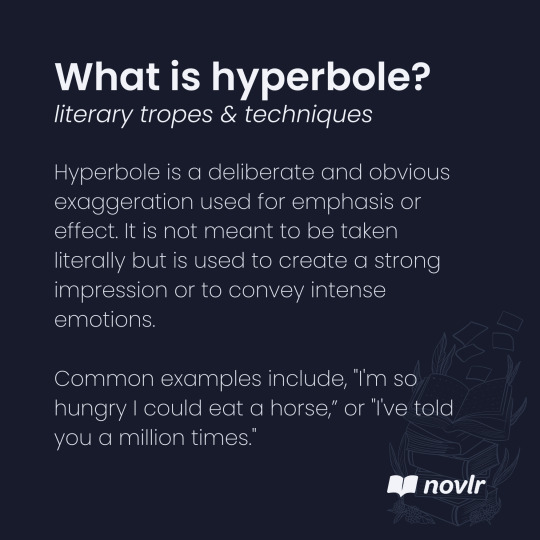
#literary devices#writing terms#writing tropes#writers#creative writing#writing#writing community#writers of tumblr#creative writers#writing inspiration#writeblr#writerblr#writing tips#about writing#writing stuff#tropes#literary terms#literary techniques#literary device#let's write#how to write#helping writers#writer#writers on tumblr#writing advice#writing resources#writers and poets#writing help#help for writers#tips for writers
819 notes
·
View notes